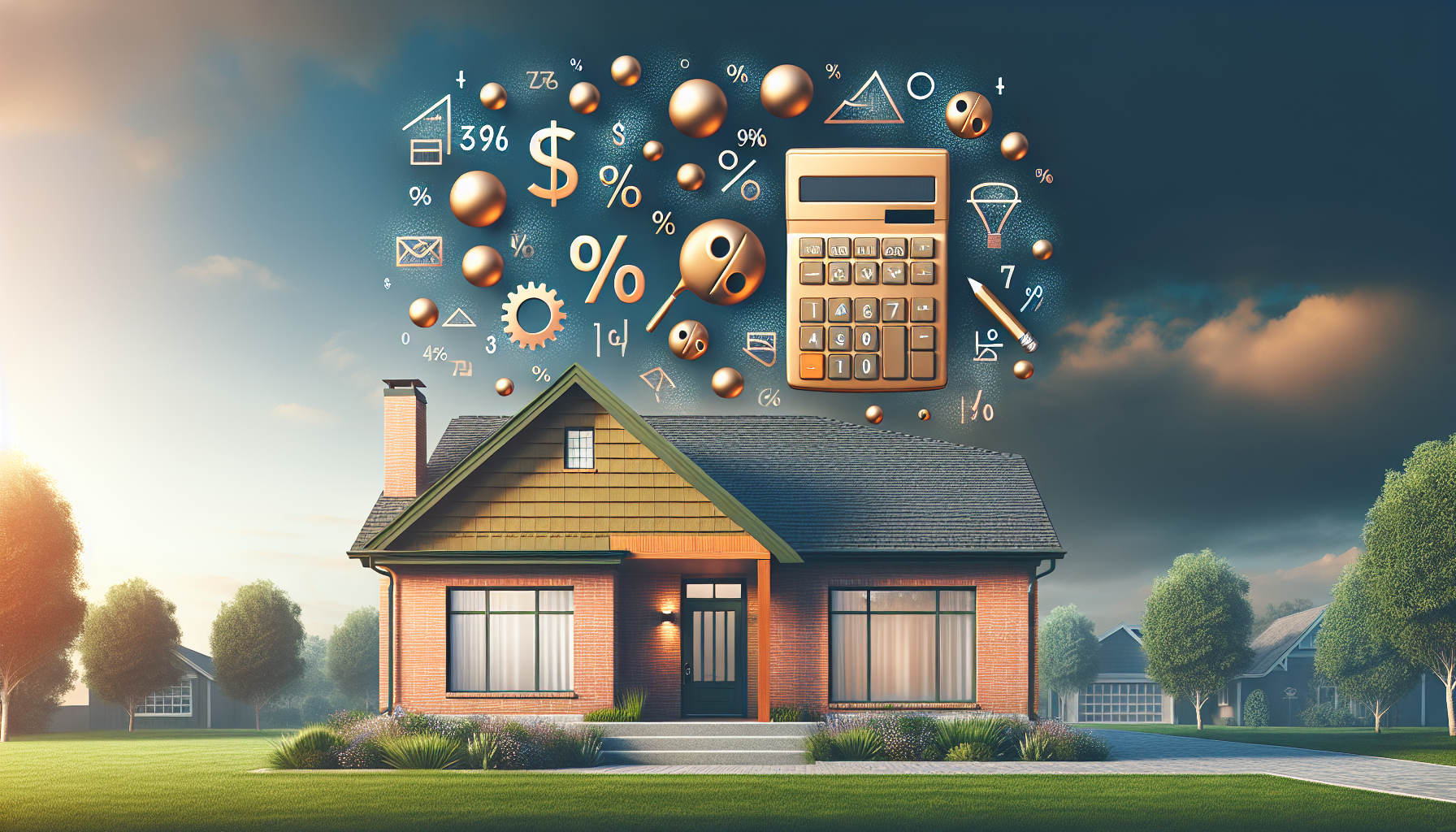
How Does the Average Home Insurance Cost Get Calculated? Factors Explained
Determining the average home insurance cost is crucial for homeowners looking to protect their assets from unforeseen circumstances. With the fluctuating nature of the real estate market and the increased occurrence of natural disasters, understanding how insurers calculate the homeowners insurance average cost has never been more important. The process involves a complex interplay of various factors, including but not limited to, location, building materials, and risk factors associated with the property.
The following sections delve into the specifics of how the average home insurance cost is calculated, shedding light on the influence of home location—where factors like proximity to water bodies or fault lines might affect insurance premiums due to an increased risk of natural disasters. It will also explore how the characteristics of the home itself, including age, construction materials, and design, play a crucial role. Additionally, personal and historical factors, such as the homeowner’s credit score and claim history, along with additional risks and features like swimming pools or high-value personal property, contribute to the final insurance cost. By understanding these variables, readers visiting thedailyinsurance will gain insight into how insurers assess risk and determine the average home insurance cost, empowering them to make informed decisions about their coverage.
Home Location
Impact of Geographic Location on Home Insurance Costs
- Proximity to Natural Disaster Zones Homes located in areas prone to natural disasters such as hurricanes, earthquakes, or wildfires typically incur higher insurance rates due to the increased risk of substantial damage. For instance, living near the coast may lead to higher premiums compared to more inland areas.
- Crime Rates and Safety Services Areas with high crime rates, especially those with frequent incidents of vandalism or theft, can expect elevated home insurance costs. Conversely, living near essential services like fire stations and hydrants can lower insurance premiums, as quick emergency response times reduce potential damage severity.
- Population Density and Urbanization Insurance costs can also vary significantly with the urbanization level of an area. Densely populated cities might see higher premiums due to the greater likelihood of claims, whereas suburban or rural areas might benefit from lower rates.
- Local Building Costs and Regulations The replacement costs of a home, influenced by local construction costs and building regulations, also affect insurance premiums. Areas with higher construction costs generally lead to higher home insurance rates.
- Special Considerations for High-Risk Zones Specific locations that require additional coverage, such as flood zones, significantly impact insurance costs. Homeowners in federally recognized high-risk flood areas are often required to carry flood insurance, which adds to the overall cost.
Home Characteristics
Age and Condition of the Home
- Older Homes and Insurance Premiums
Living in an older home generally leads to higher home insurance premiums due to the likelihood of aging materials causing damage to critical systems such as electrical, plumbing, or roofing. These homes may require updates to meet current codes, potentially increasing costs. - Impact of Home Maintenance on Insurance Costs
The overall condition and maintenance of a home significantly influence insurance premiums. Well-maintained homes are less likely to incur high premiums as they pose a lower risk for claims related to structural or system failures.
Size of the Home
- Larger Homes and Higher Premiums
The size of a home directly affects insurance costs, with larger homes generally attracting higher premiums. This correlation exists because bigger homes often have higher replacement costs and are perceived as having greater risks associated with structural complexity and potential damage.
Type of Coverage and Deductibles
- Choosing the Right Coverage
Homeowners must decide between different types of insurance coverages such as dwelling, personal property, and liability coverage. More comprehensive coverage typically results in higher premiums. - Deductibles and Premium Costs
The deductible amount is crucial in determining the premium. Opting for a higher deductible reduces the premium cost but increases out-of-pocket expenses during a claim. Homeowners should balance the deductible amount with their ability to manage potential losses.
Personal and Historical Factors
Claims History
- Impact of Previous Claims: Insurers often consider a homeowner’s past claims when determining insurance rates. A history of multiple claims can suggest a higher risk, potentially leading to increased premiums.
- Duration Claims Impact Rates: Claims typically affect a homeowner’s insurance rates for about five to seven years, depending on the insurer’s policies. After this period, rates may decrease, assuming no further claims are filed.
- Type and Frequency of Claims: Specific types of claims, such as those for water damage or theft, may lead to higher rate increases due to the perceived risk they represent.
Credit Score
- Influence of Credit-Based Insurance Score: A higher credit-based insurance score can lead to lower premiums as it indicates lower risk to insurers. Conversely, a lower score can increase premiums significantly.
- Differences in Credit Score Use: Unlike financial credit scores used by lenders, insurance scores are designed to predict the likelihood of filing a claim, which directly influences premium costs.
Marital Status
- Lower Rates for Married Couples: Married individuals often receive lower homeowners insurance rates. Insurers view married couples as less likely to file claims compared to their single counterparts.
- Combined Policies and Discounts: Being married can also lead to additional savings through bundled insurance policies, further reducing the overall cost of insurance.
Additional Risks and Features
Pools, Trampolines, and Pets
- Swimming Pools: Often considered “attractive nuisances,” swimming pools can significantly increase homeowners’ insurance premiums. Homeowners must take steps such as installing fences or safety covers to mitigate risks, especially to protect children from potential dangers. Increasing liability coverage is recommended, as pools can lead to higher insurance costs.
- Trampolines: Similarly, trampolines are viewed as high-risk features that can raise insurance premiums. Ensuring safety measures like netting and padding can influence insurance costs and coverage availability. Some insurers may increase premiums, while others might not offer policies to homeowners with trampolines due to the increased liability risks.
- Pets: Certain breeds of dogs or exotic pets can also affect homeowners’ insurance policies. Insurance companies may charge higher premiums or deny coverage based on the perceived risk associated with specific animal types, particularly if they are considered aggressive or exotic.
Security Systems and Safety Features
- Home Security Systems: Installing security systems can lower homeowners’ insurance costs by reducing the risk of theft and other damages. Features like alarms, sensors, and cameras enhance home security and can deter potential intruders, leading to discounts on insurance premiums.
- Fire Safety: Integrating smoke detectors and fire alarms into security systems not only enhances safety but may also qualify homeowners for additional insurance discounts. These systems provide early warnings, which can help prevent extensive damage and reduce insurance claims.
- Advanced Monitoring: Security systems with professional monitoring services offer added protection by ensuring that emergency services are promptly notified during incidents. This continuous monitoring is highly valued by insurance providers and can lead to further reductions in insurance rates.
By understanding how these additional risks and features impact insurance costs, homeowners can make informed decisions about their insurance coverage and safety measures.
Conclusion
Throughout this exploration of how average home insurance costs are calculated, we have shed light on the myriad of factors that insurers consider, from the impact of geographic location and the age and condition of the property to personal and historical factors like claims history and credit score. This comprehensive review underscores the importance of understanding these variables not just as isolated factors but as interconnected elements that collectively influence the premiums homeowners are required to pay. By delving into the specifics of each component, from the proximity to natural disaster zones to the presence of safety features like swimming pools or security systems, the discussion offers invaluable insights for homeowners looking to navigate the complexities of securing appropriate and cost-effective home insurance.
Acknowledging the intricate calculus behind insurance cost calculation equips homeowners with the knowledge to make informed decisions regarding their coverage, whether it’s opting for higher deductibles, investing in home improvements that mitigate risk, or understanding the role of credit health in insurance costs. As we consider the broader implications, it becomes clear that a deeper comprehension of these factors doesn’t just have the potential to reduce insurance premiums but also significantly impacts homeowners’ readiness in the face of unforeseen circumstances. This underscores the value of continued exploration and adaptation in the ever-evolving landscape of home insurance, suggesting that both homeowners and insurers alike stand to benefit from ongoing education and strategic adjustments in policy and practice.


